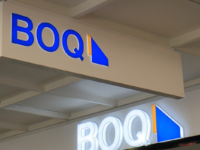If you do nothing else with your business financials, get these three key numbers every month to help you gain clarity, confidence and control of your business finances, writes Tania Byrnes.
1. Year to date net profit variance
A bit of a mouthful, but broken down, it simply means the difference between
- How much money you have actually made (after all of your expenses) so far this financial year and
- How much you expected to be making (after all of your expenses) by this time of the year.
Why?
We all go into business with expectations of earnings. Sure, some of it might be wishful thinking, but everyone has a bare minimum (or else why are we here?). YTD net profit variance gives you a business barometer, much like a GPS in your car, that tells you if you are on track or not. If you’re not, you can drill down to see exactly where things are going wrong and take action.
2. Bank balance projections over the next three months
A good cashflow projection will take into consideration:
- When actual cash will hit your bank account
- When actual cash will come out of your bank account
- Items that wouldn’t usually appear on your Profit and Loss Statement such as
- GST
- Superannuation
- PAYG tax
- Income tax payments
- Loan payments etc.
Why?
Newsflash, if we aren’t going to be able to pay our bills in three months, it might do us some good to know about it now, so that we can take some pre-emptive action. A negative cashflow number can seem daunting, but knowledge is power and it’s better than lying awake at night worrying about it.
Conversely, if we are totally cashed up, great! Put some aside in an interest baring deposit, take a holiday, re-invest and so on. Either way, it puts us in control of our future and won’t leave us caught short.
3. YTD gross profit margin by product/service
Not all revenue is the same! Sometimes, it will cost you 75 cents to make a dollar, other times it can cost 10 cents. Unfortunately (and I see this too often), it can cost you two dollars to make a dollar!
Gross profit margin tells you how efficiently you use your resources to make money across different products and services. The costs in the calculation usually reflect the costs that change in relation to your sales.
Gross profit margin clarifies what it costs to earn money across your different products and services.
Why?
It’s another barometer you monitor monthly to make sure it’s within an acceptable range. If it drops, it’s an indicator that you might be overspending on the direct costs related to bringing in income in that product group.
How do I get these numbers?
Fairly easily, your accounting software is a good start. You’ll also need:
- a well thought out realistic and regularly updated budget. This is your business roadmap.
- accurate and up to date transaction data
- a reconciled bank account
Cashflow and reporting software is a big help (there are many, but I use Calxa). You can take the DIY approach and comb through your numbers yourself, (not recommended – you just need the numbers). You could find a highly skilled bookkeeper, or, you could use a Virtual CFO, to collate the information and present it to you in an easy to understand format.
Remember: structure follows strategy (not the other way around). When planning improvements, evidence-based decisions should inform strategy, which in turn will guide you in the structure to move forward and achieve your goals.
Tania Byrnes is the founder of www.australianbusinessbreakthroughs.com.au.












